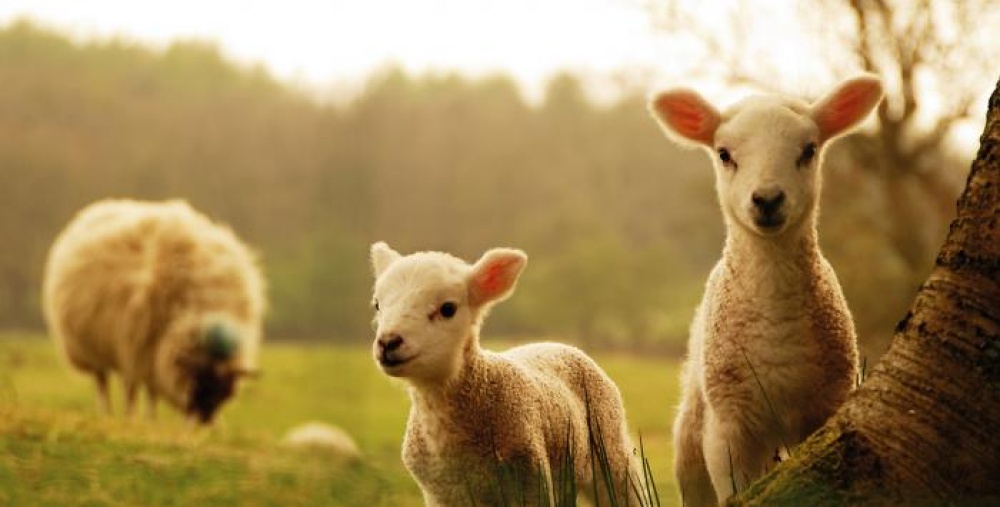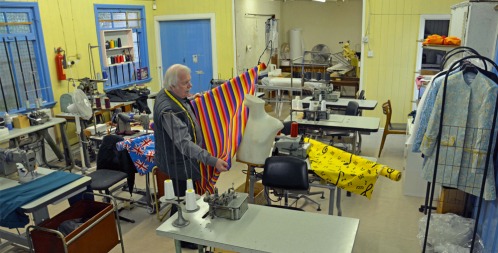Lambing Life

When we were children, my parents pulled off a rather clever trick whereby they convinced us that lambing time was an exciting time of year. Quite how they managed to do this while working all the hours of the day and night and also dealing with three unruly children is beyond me, but they did it well. My brothers and I genuinely looked forward to the start of lambing, and would hurry home from school to throw off our uniforms, don wellies and leggings and spend the hours until bedtime in a freezing shed. Lambs to play with! Sheep to feed! Buckets to carry! The chance to deal with hazardous substances! Hurrah!
Twenty years on, we’re a little more realistic about the joys of the season. Spilling iodine all over your hand is now viewed with annoyance rather than joy (it was always fun to tell people at school your fingers were yellow because you’d trapped them in a door/been poisoned, but it’s not so much fun to go into the office looking as though you’ve started to go off), and (if I’m honest) I would rather deal with a tricky work deadline these days than a tricky birth in the sheep pens. But I’m getting ahead of myself: for many people lambing time is a complete mystery. So how does it work?
Our family farm in Northumberland is on fairly low land, so we’re able to lamb outside. This means that all the in-lamb ewes are put in one large field near the house before they’re due to lamb. It’s a field with loads of dykes, dips and stone walls around it so there’s plenty of shelter, and with it being near the farm we can feed them and keep an eye on them. Lots of the ewes will give birth outside, and then be brought in by quad and trailer along with their lambs. If there’s a problem, or things aren’t happening as quickly as they should, we’ll bring them in and lamb them ourselves. (This sometimes grosses people out, to which the only response is: get a grip).
So far it might sound simple, but you have to be on duty all the time to make sure you forsee any problems – constant vigilance. Unfortunately this means going inside for a sleep by the fire in the afternoon is out of the question. Lambing outside means that we don’t have a night shift (blundering around in a dark field can cause more problems than it solves) but there is plenty of work to do in the shed before it gets light, and after the sun goes down.
Every sheep will need feed, water and hay, as well as clean straw for bedding, three times per day. Lambs need to be given pills to prevent disease, have their navels cleaned with iodine to prevent infection, be castrated or ringed and marked so that we can tell which lambs belong to which sheep. That’s just the basics: there are also countless problems to deal with every day, be it a ewe who is somewhat lacking in motherly instinct and won’t stand to let her lambs suckle (she needs to be supervised to make sure the lambs get enough milk), or one who doesn’t have enough milk to feed her lambs (they’ll need to be bottle fed – admittedly one of the jobs that hasn’t lost its charm over the years).
It’s a common saying among farmers that where there is livestock, there’s deadstock, and unfortunately that holds true at lambing time too. This means that often there are lambs with no mothers, mothers with no lambs, and all need to be looked after. The hope in these situations is to be able to pair up the orphans with the spare mothers, and very often it works. It can take days of hard work to make a ewe accept a lamb that isn’t her own, but it’s worth the effort.
After a day or two in the pens (depending on how strong the lambs are, and on the weather, and a hundred other things) the ewes and lambs can be put into one of the small paddocks around the farm steading, where the lambs can learn to follow their mothers and we can still keep a close watch on them all. If all goes well here, they’re put out into larger fields around the farm.
All this has to happen for every single ewe on the farm. For us, that’s around 400 times, but for many farmers it’s up to a thousand, and there are still months and months, during which anything could happen, before the lambs can be sorted and sold for meat or as breeding stock. Lambing time is just the beginning.







